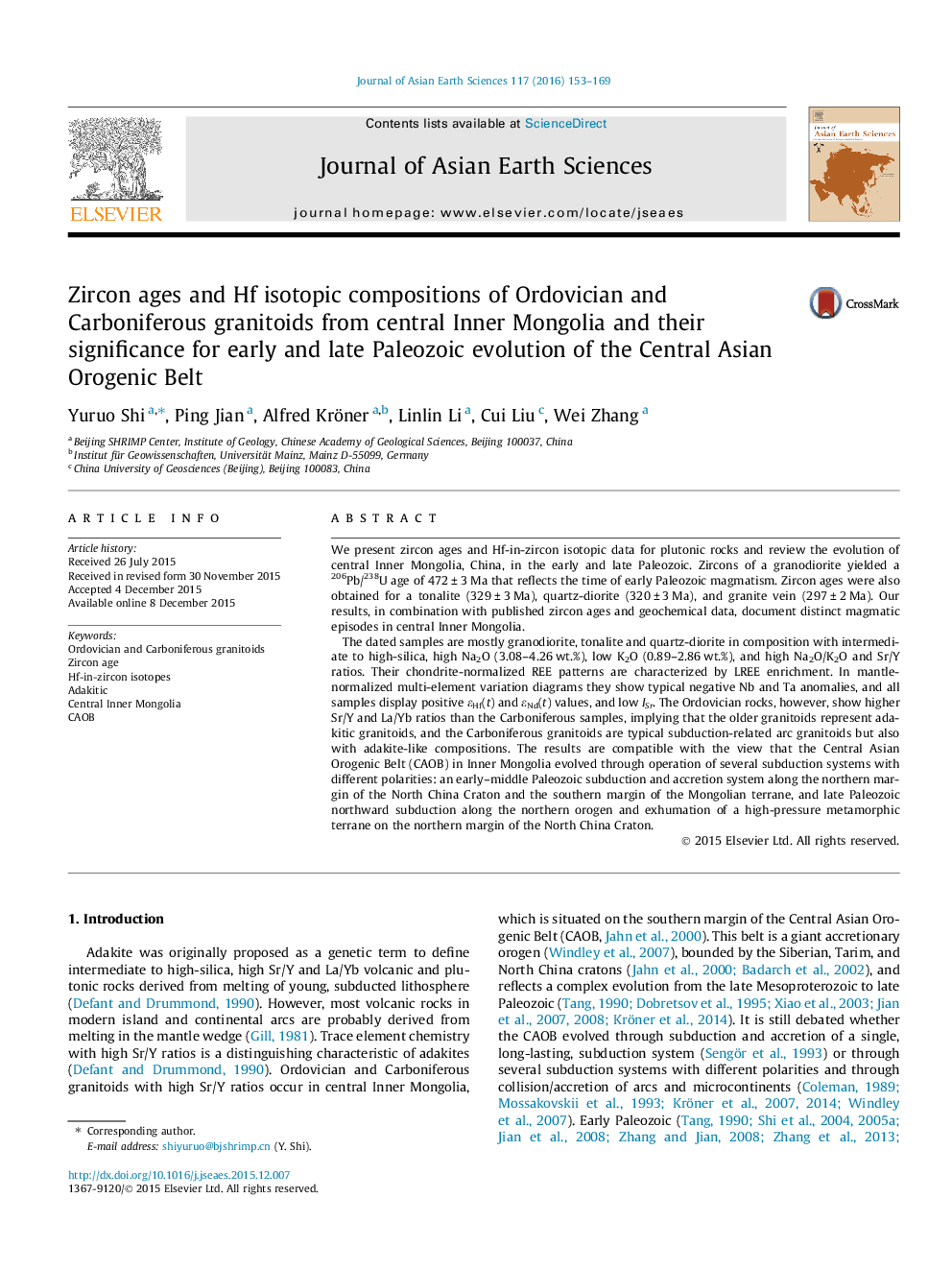| کد مقاله | کد نشریه | سال انتشار | مقاله انگلیسی | نسخه تمام متن |
|---|---|---|---|---|
| 4730182 | 1640354 | 2016 | 17 صفحه PDF | دانلود رایگان |

• New zircon ages and Hf isotopic compositions for plutonic rocks.
• Early and late Paleozoic evolution of the Central Asian Orogenic Belt.
• Ordovician granitoids represent adakitic granitoids.
• Carboniferous granitoids are typical subduction-related arc granitoids.
• CAOB evolved through several subduction systems with different polarities.
We present zircon ages and Hf-in-zircon isotopic data for plutonic rocks and review the evolution of central Inner Mongolia, China, in the early and late Paleozoic. Zircons of a granodiorite yielded a 206Pb/238U age of 472 ± 3 Ma that reflects the time of early Paleozoic magmatism. Zircon ages were also obtained for a tonalite (329 ± 3 Ma), quartz-diorite (320 ± 3 Ma), and granite vein (297 ± 2 Ma). Our results, in combination with published zircon ages and geochemical data, document distinct magmatic episodes in central Inner Mongolia.The dated samples are mostly granodiorite, tonalite and quartz-diorite in composition with intermediate to high-silica, high Na2O (3.08–4.26 wt.%), low K2O (0.89–2.86 wt.%), and high Na2O/K2O and Sr/Y ratios. Their chondrite-normalized REE patterns are characterized by LREE enrichment. In mantle-normalized multi-element variation diagrams they show typical negative Nb and Ta anomalies, and all samples display positive εHf(t) and εNd(t) values, and low ISr. The Ordovician rocks, however, show higher Sr/Y and La/Yb ratios than the Carboniferous samples, implying that the older granitoids represent adakitic granitoids, and the Carboniferous granitoids are typical subduction-related arc granitoids but also with adakite-like compositions. The results are compatible with the view that the Central Asian Orogenic Belt (CAOB) in Inner Mongolia evolved through operation of several subduction systems with different polarities: an early–middle Paleozoic subduction and accretion system along the northern margin of the North China Craton and the southern margin of the Mongolian terrane, and late Paleozoic northward subduction along the northern orogen and exhumation of a high-pressure metamorphic terrane on the northern margin of the North China Craton.
Journal: Journal of Asian Earth Sciences - Volume 117, 1 March 2016, Pages 153–169